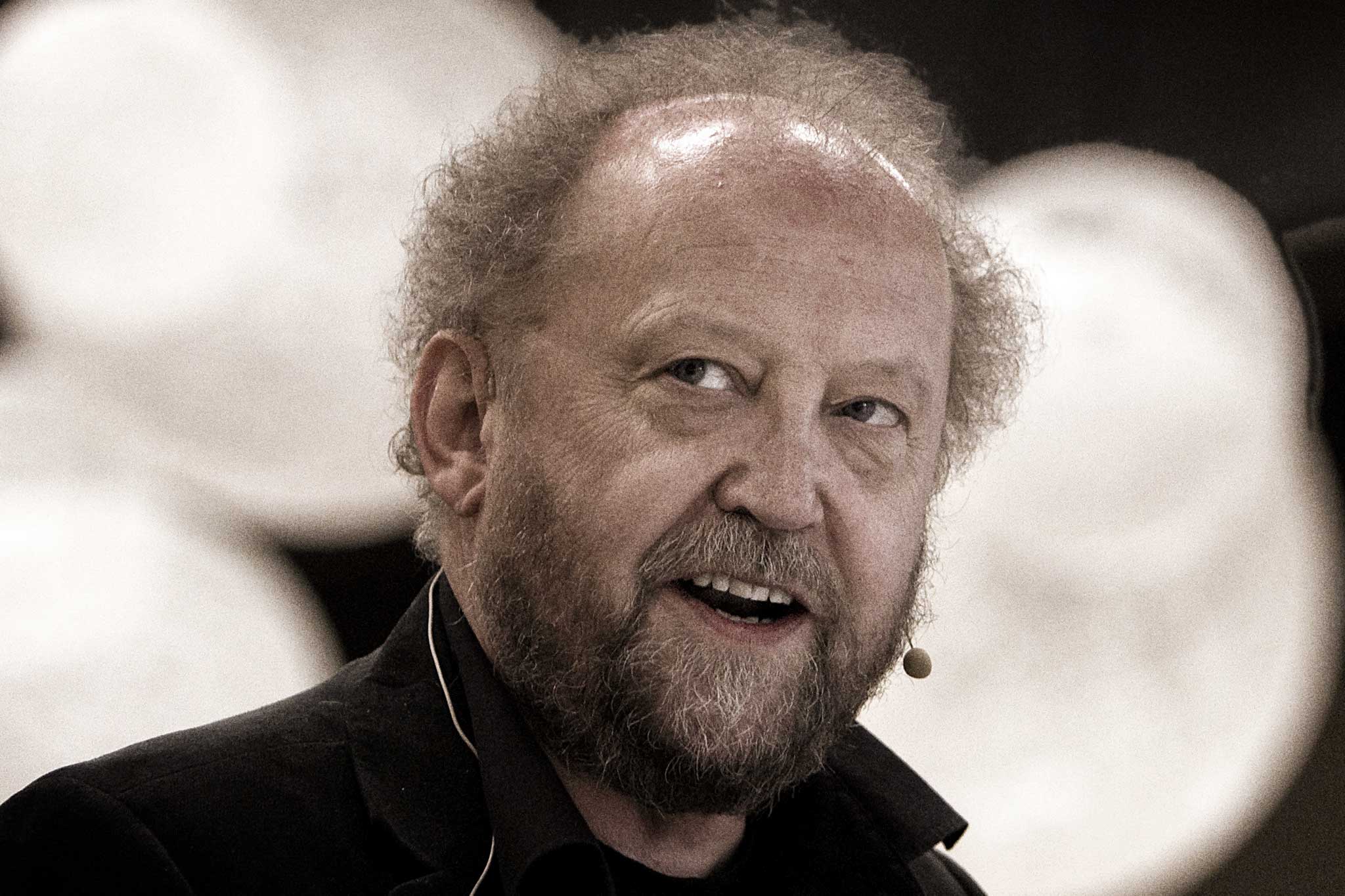This is an excerpt from the book Meetings, by Default or by Design, conceived and written by Mike van der Vijver and Eric de Groot. It is a workbook with 100+ upgrades and enhancements for all those who desire better meetings and events.
Summary
By default
Your organisation has decided to hold a meeting for a certain purpose and to achieve certain goals. One of the first things you do is put a team of people together who will organise it. This project team includes both content and production-focused members. Their proposals and decisions for the programme come from their perceptions about content and execution, further shaped by the organisation’s leaders, sometimes an advisory committee and satisfaction surveys.
What you are missing
The programme aims to achieve the stated objectives through the mindset of the project team. However, because it is based for the most part on input from the project team, it falls short on the participant perspective.
Input from participants adds essential insights into the ways in which the meeting and its participants must achieve the goals. It also provides the organisers insights into the participants’ own objectives for the meeting. Good meeting programmes incorporate both.
By design
Have someone conduct at least six in-depth interviews with future participants. Ask the interviewees what they themselves want to get from the meeting as well as their views on organisational goals. Make sure the interviews are broad, open conversations. Once you start doing them, you should quickly extend the practice to all your meetings.
A giant leap forward is to organise sessions and whole meetings in which the content is entirely participant-generated. Participants decide what is relevant to them about a certain topic. As an organiser, you step back and offer participants a simple process that helps them navigate the session, while you facilitate all the necessary support. That’s all.
Getting started the right way
Case: Global fine chemicals company, Amsterdam, the Netherlands
They’re all there: the CEO, the Head of Events, the Strategy Officer, the Head of Corporate Communications and a young, talented member of the events team.
Three questions are on the table: What is the experience the event should offer participants? Which behaviour should it strengthen? And consequently, which content is required?
The lean methodology helps these executives with an engineering background to do something they rarely need to: making soft skills and processes measurable and manageable.
At the end of the inception meeting, everyone knows what they’re up for. The CEO can now hand over the content of the event to his colleagues, and the event team can focus on organisational issues. Designing the programme is lightning fast. Three months later, participants experience the logic in the programme.
“Make sure that thinking in terms of participant perspectives and participant outcomes becomes the new default in the way you create your events”
By default
The project team members are all smiles. Their enthusiasm almost bursts out of the little room where they are holding their preparatory meeting. The board has just agreed with their proposal to go for an all-staff meeting! They have endorsed the objectives and cleared the budget. So now the team can speed ahead.
Typically, most meetings start with a project team that is going to make the meeting happen. Once the meeting is on the organisation’s radar, the project team needs to get started for real. It is the driving force and its ideas, fine-tuned with those of the managers or the board, will give shape to the event. They submit proposals of what needs to happen during the meeting to the ultimate decision-makers or, in many cases, they actually make those decisions themselves.
The project team tends to consist of two kinds of people: those responsible for the content and those who do the practical things – the people who deliver operations and production. The latter are doers. They itch to get started. And in order to get started they need a blueprint of the programme and everything it implies. That way, they can get their hands dirty, draft a budget, start looking for a destination and a venue, etcetera.
The content people are also anxious for a programme blueprint; the sooner the better is what they crave, as well. They need to worry about calls for papers, securing that hard-to-get speaker, the number of parallel sessions, etcetera. From both sides, having a preliminary programme is a practical, necessary and legitimate requirement. It consists of the feasible merger between input from both halves of the project team: a good chunk of content and some sound, common-sense practical and logistical choices. That works to get going.
The project team’s enthusiasm translates into a lot of decisions about the meeting’s planning and its set-up, often taken early on by the project team and based on their best assessment of everybody’s needs, desires, and goals.
What you are missing
All meetings exist to achieve something specific with, for and by participants. The organisers and the delegates both have their distinct expectations and goals. How well do these align in practice?
Just offering participants content in the form of information does not guarantee that the “something specific” will materialise. Neither does offering them a comfortable room, delicious food, smooth transportation or a fun, well-guided city tour. All of these are necessary, but none of them is a sufficient condition to obtain some kind of change to participants’ behaviour.
Behavioural psychology and neuropsychology conclusively show that more is needed to create this kind of change: content and the right circumstances must contribute to a process that creates a relevant emotional experience. It is the emotional experience that will bring about the change in the participant’s mind.
It follows that the default method of conceiving meeting programmes, centrally by a project team often in cooperation with a board of final decision-makers, is risky to say the least. In fact, its central, top-down perspective risks missing out on the delegate perspective.
“Input from participants adds essential insights into the ways in which the meeting and its participants must achieve the goals.”
In order to offer participants a relevant emotional experience, you need to know a lot about them. You need to know what moves them, their present mindset and their specific perspective on the content, what keeps them awake at night, what they want to learn that is relevant to them, and how they can apply that learning in their daily lives.
Moreover, organisations, meeting delegates and the world around them is in constant flux. To make sure your meeting has maximum relevance, you must adapt and align permanently and not just in the choice of your content. The exit surveys of the event’s previous edition provide little useful input in this regard. It is equally important to recalibrate your formats and the various ways in which you engage with delegates.
By relaying essentially on the perceptions of your project team and your decision-makers about the programme, you miss the vital participant input which allows you to create exactly the right process and experiences for them. The process that will make your event truly worth their while.
And you know what? If you ask them, most participants can’t wait to give you that perspective! For free!
By design
Do now! The solution is deceptively simple: you need to talk to participants to learn about their perspective, their needs, their expectations and you need to talk to them as soon as you begin preparing the meeting, very early in the preparation process.
Most project teams start from the assumption that they know what their participants are looking for, often based on the satisfaction surveys collected during the previous edition of the event.
Our experience from over 20 years of talking to future participants when designing meeting programmes shows the contrary. Despite the organisers’ best efforts, participants always tell us things about the meeting that the organiser doesn’t know.
Because there is a snag. These talks with future participants must not be done by the project team itself. Ask an outsider to do it for you. The reason is that participants will tell an outside interviewer a more revealing story than they will tell you. Simply because the outsider has no vested interests, no hidden agenda, and no real or perceived hierarchical relationships. Also, a skilled outside interviewer will ask questions that you won’t, fresh, unbiased questions, from an outsider perspective, generating unforeseeable input.
Participant interviews work best when done early on. You should do them at the start of the process of meeting preparation. However, if you have an event for which the programme is already pretty much complete, you can still look for a specific session where you strengthen the participant perspective. Find some people who you know will take a special interest in this session and have someone interview them. Use the outcomes to renew your speaker(s) briefing about the session.
In general, you must explicitly task the interviewer to test all the assumptions you yourself may have about the meeting: the reasons for having it, its objectives, its content, sensitive issues, etcetera.
“As an organiser, you step back and offer participants a simple process that helps them navigate the session, while you facilitate all the necessary support”
The questions must zoom in on participants’ motivation to attend the event; what they need in order to show the desired behaviour changes and why they are not showing these behaviours already; about elephants in the room and about uncomfortable truths. What ensues is a highly empathic conversation which reveals what moves participants and what won’t.
Oh, and in case you are tempted, such an in-depth interview has nothing in common with a pre-event questionnaire or an email survey. So, don’t even think about it …
The next level You have decided to do the participant interviews once for your next event? For a minor meeting or for your flagship event? Good!
Now the next step is to do it each and every time. Make sure that thinking in terms of participant perspectives and participant outcomes becomes the new default in the way you create your events. Maybe you are not entirely convinced that these participant interviews will produce useful input for your programme. Maybe you think that after so many years of experience, you know your participants inside out; that you know their lives and preferences as well as the contents of your own back pocket. In that case, our advice is: do them anyway!
Since the above is a bit of a no-brainer, let’s go beyond. How about a programme or a session that is entirely participant-generated? This overturns traditional roles and responsibilities. It flips the process by which content is infused in the meeting.
The only thing you need at the start is a subject or topic, a process with steps that conduct the participants to an outcome and all the necessary support to get there. As an organiser, your role becomes that of facilitator of the process, and the participants themselves get to decide what they think is most relevant to them.
Viewed as a series of steps, the set-up would be like this:
- Choose the broad subject.
- As an option, you may want to start with an inspiring introductory story.
- Offer participants a process that helps them to define and then select their specific angle or subtopic.
- Offer them the opportunity to have an exchange of thoughts, opinions, know-how on their subtopic of choice (space and time).
- Provide support: expert know-how, facilitators, flip charts, coffee and tea, meals, etcetera.
- Decide what is going to happen with the results.
- Close the proceedings with some kind of exchange about the results.
Doing more than one session this way requires that you connect them in a logical and productive way.
This kind of session appeals strongly to participants’ intrinsic motivation to work with content. It prompts them to be inquisitive and to take responsibility for their own outcomes. Other big advantages include more creativity and a much greater likelihood of dynamics that benefit from serendipity.





